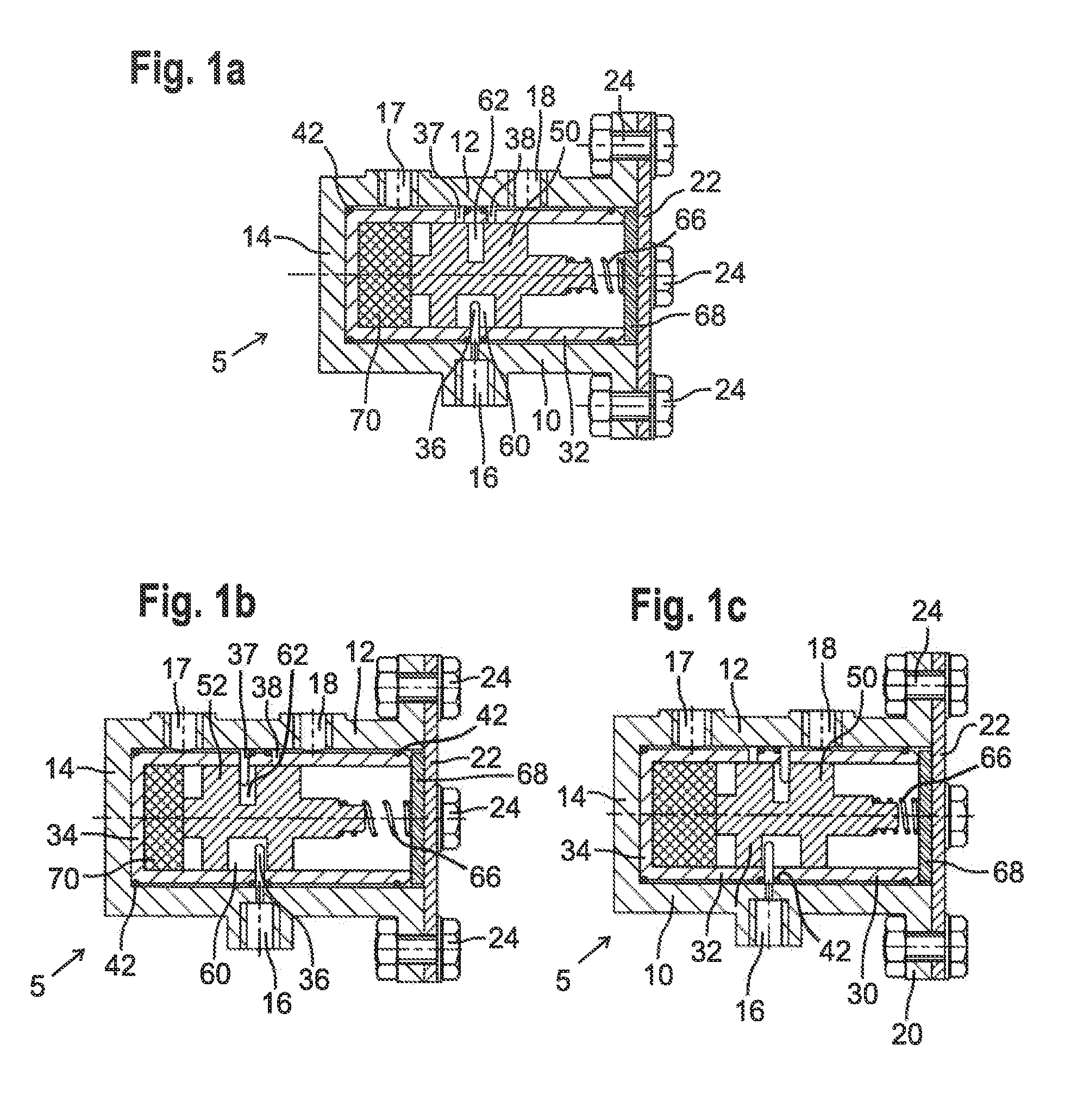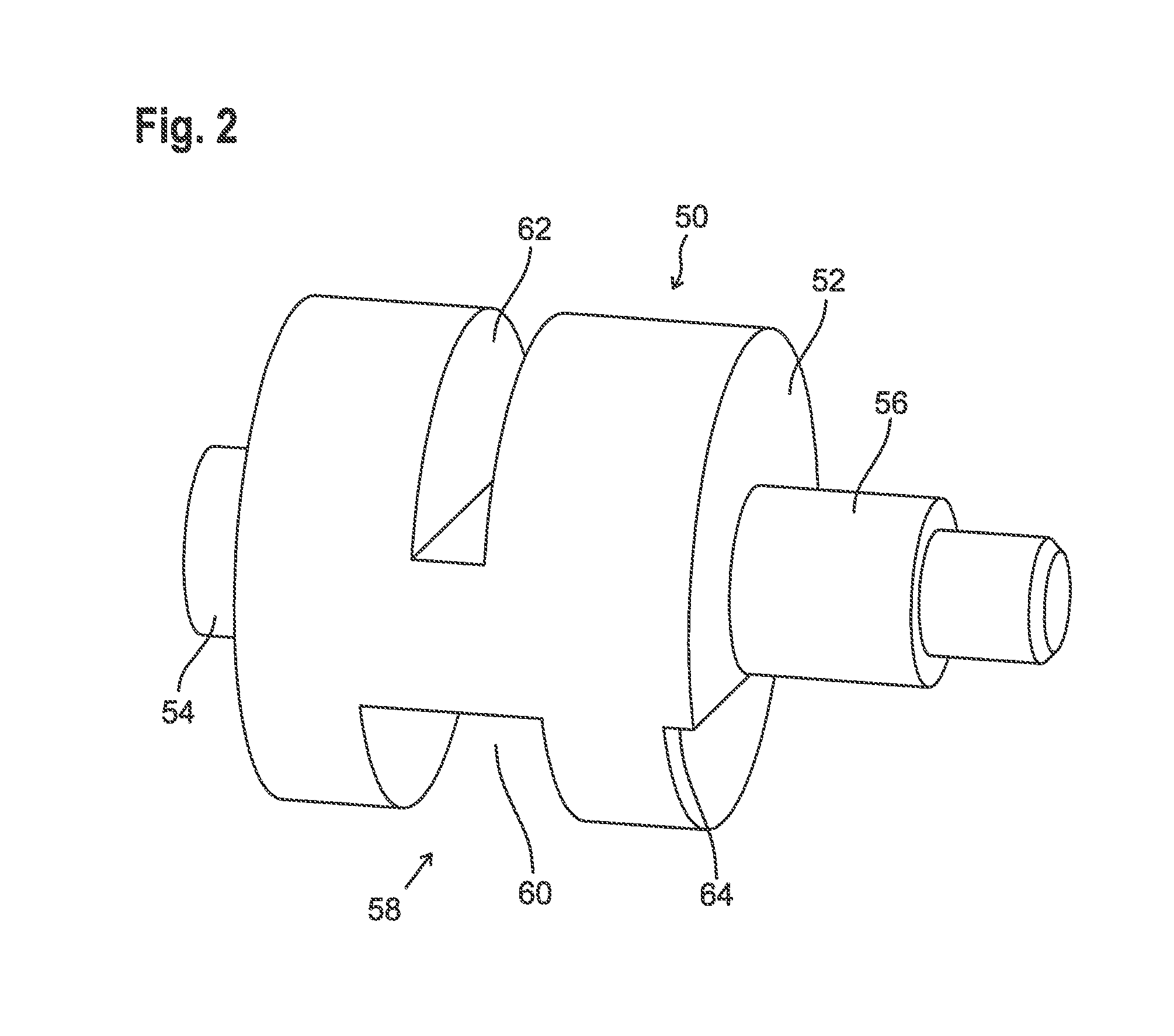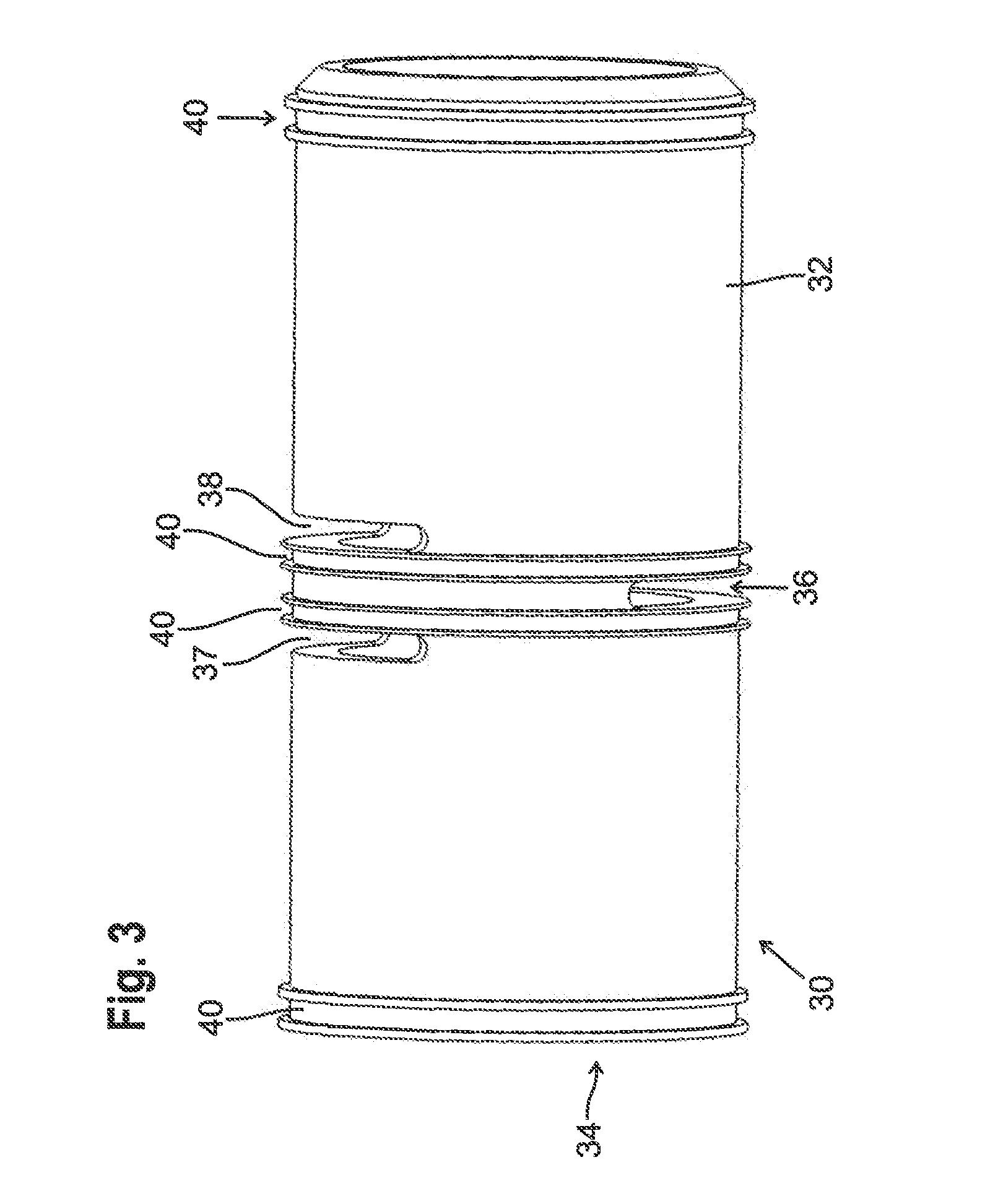Slide valve
a technology of sliding valve and sliding plate, which is applied in the direction of valve details, multiple way valves, thin material handling, etc., can solve the problems of consuming energy of the valve drive, requiring installation space, and being difficult to make it more compact, etc., and achieves the effect of less energy
- Summary
- Abstract
- Description
- Claims
- Application Information
AI Technical Summary
Benefits of technology
Problems solved by technology
Method used
Image
Examples
first embodiment
[0076]In the following, the polymer actuator 70 is disclosed by way of FIGS. 4 to 6. The slide valve 5 basically corresponds to the embodiment shown in FIGS. 1 to 3, and like reference numerals are used for the components known from this embodiment. All of the explanations regarding these components also apply to the slide valve of FIGS. 4 to 6.
[0077]In the embodiment of FIGS. 4 to 6, the polymer actuator 70 is a dielectric elastomer actuator, which in this case is in the form of a membrane actuator.
[0078]The dielectric polymer actuator is generally based on the application of a large-area electrode to each of two mutually opposing faces of a dielectric polymer film. When a sufficiently high electric voltage is applied to the electrodes, the electrodes attract one another, in such a way that the interposed film is compressed. Since the dielectric film used is virtually incompressible, the reduction in the distance between the electrodes leads to a change in shape. In a membrane, for...
second embodiment
[0092]FIG. 8 to 9 show the polymer actuator 70. Aside from the changes to the polymer actuator, the valve corresponds to the one known from FIGS. 1 to 6. Accordingly, the components known from these drawings are provided with like reference numerals, and reference is made to the relevant explanations.
[0093]The difference from the polymer actuator of the embodiment of FIGS. 4 to 65 is that a stack actuator is used in the embodiment of FIGS. 8 and 9. A stack actuator consists of a plurality of individual layers of dielectric polymer film, in such a way that a dielectric elastomer actuator is again formed. The electrodes on the mutually remote faces of each layer are mutually contacted, in such a way that an electric voltage can be applied between the electrodes on the mutually remote faces of a layer. Under the action of this voltage, the respective layer is compressed, some material being pressed outwards because of the incompressibility of the polymer material used. Overall, the axi...
PUM
 Login to View More
Login to View More Abstract
Description
Claims
Application Information
 Login to View More
Login to View More - R&D
- Intellectual Property
- Life Sciences
- Materials
- Tech Scout
- Unparalleled Data Quality
- Higher Quality Content
- 60% Fewer Hallucinations
Browse by: Latest US Patents, China's latest patents, Technical Efficacy Thesaurus, Application Domain, Technology Topic, Popular Technical Reports.
© 2025 PatSnap. All rights reserved.Legal|Privacy policy|Modern Slavery Act Transparency Statement|Sitemap|About US| Contact US: help@patsnap.com



